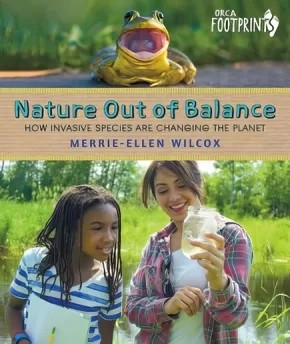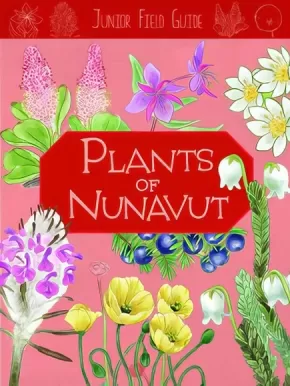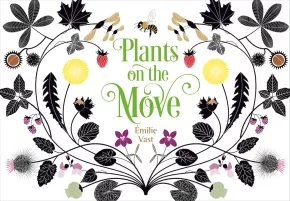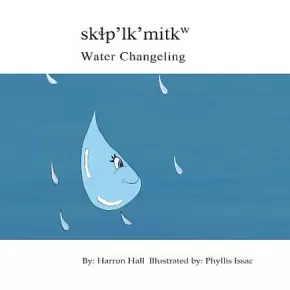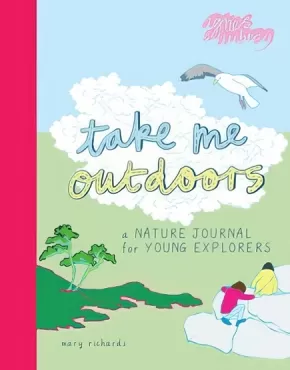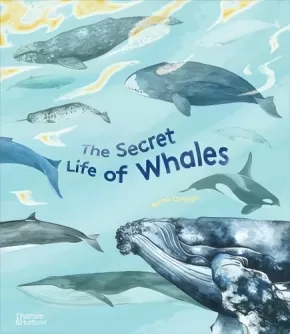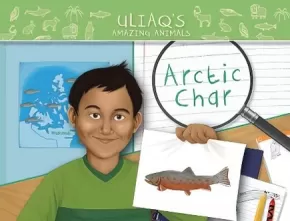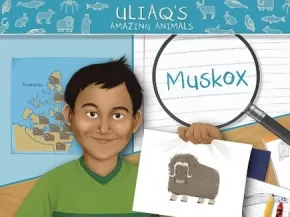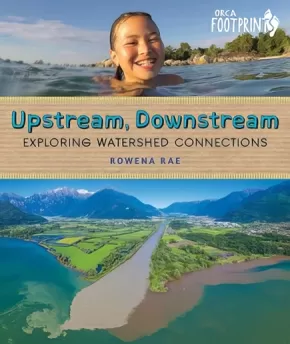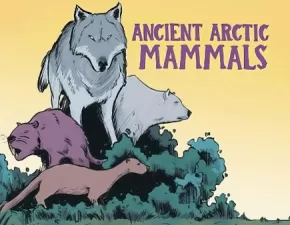
Nature
151
-
165
of
444 Results;
Sort By
Go To
of 30
Nature Out of Balance: How Invasive Species Are Changing the Planet
$19.95
Format:
Hardcover
ISBN / Barcode: 9781459823952
Synopsis:
Synopsis:
Plants, animals, insects and fish are moving in. Invasive species threaten local ecosystems and the planet’s biodiversity, but are they all as bad as we think they are? In Nature Out of Balance: How Invasive Species Are Changing the Planet author Merrie-Ellen Wilcox profiles all-star invasive species around the world, starting in her own neighbourhood, and warns that humans are the most invasive species of all. We find out how and why species become invasive, what we can do to stop their spread and whether it’s time to think differently about invasive species that are here to stay.
Reviews
“A well-written volume on a distinctly important topic for youngsters to be aware of as they grow into their role of guardians of the ecosystems. Highly Recommended.” — CM: Canadian Review of Materials
“The balance of hope against the potentially stressful subject leaves readers informed and energized rather than defeated. Handy and lucid, this slim volume makes an important topic digestible.” — Kirkus Reviews
“A high-quality introduction to a topic not often covered in books for middle graders.” — School Library Journal
Educator & Series Information
This book is part of the Orca Footprint series. Kids today inhabit a world full of complex—and often mystifying—environmental issues. Orca Footprints aim to help kids answer their questions about the state of the natural world with well-researched, simply-expressed information and powerful images. With topics such as food production, water, cycling and sustainable energy, these books will inspire kids to take action.
In Nature Out of Balance, we find out how and why species become invasive and practical tips about what we can do to stop their spread.
Globalization means that new invasive species are being found around the world every day, threatening the biodiversity of our neighborhoods, cities, countries and the planet as a whole.
The author has studied ecological restoration and examines invasive species starting in her own backyard.
This book offers a unique perspective on invasive species and how it might be time to rethink how we coexist with them.
Invasive species are often described as the most overlooked environmental threat in the world (in the US they cause $120 billion a year in damage, in BC alone they cost farmers $50 million a year).
Recommended for ages 9 to 12
Additional Information
48 pages | 8.00" x 9.50"
Plants of Nunavut
$12.95
Artists:
Format:
Paperback
Text Content Territories:
Indigenous Canadian; Inuit;
ISBN / Barcode: 9781774502884
Synopsis:
Synopsis:
Learn about the different plants that grow in the Arctic. Despite the cold climate, many plants grow in Nunavut and have important uses. This book provides information about some of these plants, what they look like, how they grow, and how they are used.
Educator & Series Information
Recommended for ages 8 to 10.
This book is part of the Junior Field Guide series. Perfect for learning all about living things in the Arctic! These Junior Field Guides give information and interesting facts about the different animals that live in Nunavut.
Additional Information
32 pages | 10.00" x 7.50" | Colour illustrations and photographs | Paperback
Plants on the Move
$22.99
Artists:
Format:
Hardcover
ISBN / Barcode: 9781623541484
Synopsis:
Synopsis:
Spinning, flying, crawling, exploding! These plants have places to go. A gorgeous, lyrical exploration of how seeds travel from plant to plant, take root, and grow.
When you think of a plant, you don't think of how it moves. But the feathery seeds of the dandelion fly to other gardens, strawberry tendrils creep, and maple seeds spin. There are many different ways plants move, not only as they grow, but in their quest to reproduce: falling, clinging, floating, burrowing--even exploding!
Fourteen plant journeys are chronicled, but more than sixty species are highlighed in Émilie Vast's fantastic and unique art style. Learn the scientific names for the different ways plants move.
Reviews
"Ten ways that plants move are described with detailed silhouette art and a moderate amount of text. The graphic art stands out beautifully within thin black frames against stark white pages. Bold green lettering and an appropriate plant image decorate each single-page chapter heading. The short chapters begin with a plant introducing itself by its common name. Sometimes a plant also addresses readers directly, as with the strawberry: “You know me well, and you love to eat my sweet, red fruit.” However, most of the plants’ supposed narrations move quickly into scientific explanations, including simple definitions of terms such as calyx, pollination, and samara. (Further definitions occur in the backmatter.) There is enough information contained here that the book will benefit from reading over multiple sittings. It excels as a reference book, especially since the graphic art is so clearly detailed that reluctant or beginning readers will be able to learn a great deal from the illustrations alone. The sequence about plant seeds traveling by animal excrement is amazingly graceful, informative, and subtle—in both words and art. Similarly, clear sequences of frames show such things as a winsome fox carrying and dropping a burr and a water lily’s fruit developing and decomposing. Groupings of 24 cultivated plants by place of origin—albeit stated as incomplete—jar with the omissions of Africa, North America, and Oceania. The few examples of human skin are light-complexioned. Leaf and learn." —Kirkus Reviews
"Even young children understand that seeds grow into new plants, but how do seeds reach the soil they need? Accompanied by crisp, stylized artwork set against a contrasting white background, this informational picture book, originally from France, introduces several ways that seeds disperse. The succinct, descriptive text is divided into sections according to the seed movement (e.g., flying, clinging, or being eaten). Each section, in turn, opens with a single or a few representative plants that explain the physical characteristics of themselves and their seeds in a first-person narrative before explaining the benefits of their seed dispersal process. A maple tree, for example, describes the “light, delicate wings” of its seeds that dry up in the fall into “little helicopters,” detach, and spiral down to the ground. A double-page spread at the end of each section offers a beautiful, visual summary of other plants that rely on the same method for their seeds." —Booklist
Educator Information
Recommended for ages 5 to 8
Additional Information
56 pages | 8.56" x 12.41" | Hardcover
skɬp’lk’mitkw / Water Changeling
$15.95
Text Content Territories:
Indigenous Canadian; First Nations; Salish; Interior Salish; Syilx (Okanagan);
ISBN / Barcode: 9781926886664
Synopsis:
Synopsis:
The journey and transformation of water from the tops of the mountains down through the rivers and streams, told from a Syilx perspective.
skɬp’lk’mitkw / Water Changeling is the story of the natural water cycle from a Syilx traditional ecological knowledge perspective. The story features a water girl named skɬp’lk’mitkw who longs to visit with her grandparents. She receives help from newfound friends who change her into rain, hail and snow so she can reach her grandparents.
Educator & Series Information
Recommended for ages 7 to 10.
Author Harron Hall has written several children's books that incorporate her Indigenous heritage and her deep commitment to protecting the land and water, including The Water Sings to Suli?, We Go with Muskrat to Those Living Underwater and Lessons from Beaver's Work.
Learn about the water cycle using the n'syilxcen (the language spoken by the Sylix/Okanagan peoples) and English languages. This book includes some words in n'syilxcen, but it is not a dual-language resource.
Learn about the water cycle through a fictional story.
This book is part of the Follow the Water series.
Additional Information
32 pages | 8.00" x 8.00"
Take Me Outdoors: A Nature Journal for Young Explorers
$21.50
Artists:
Format:
Paperback
ISBN / Barcode: 9781916474581
Synopsis:
Synopsis:
With its smart design, beautiful illustrations and perfect size to pop in a backpack, Take Me Outdoors is a fun, lively way to engage with the wild and natural world. Each of the five ‘adventure’ chapters help children to engage with their surroundings, from their own backgarden or local park, to a beach, forest or lakeside. As they complete lists, draw pictures and answer questions, they will be thinking carefully about the environment and nature as they experience it – what they can see, hear and feel, and how they can look after it. A final chapter allows them to compare their adventures, and there's also a useful glossary so they can learn new words and ideas. Fun, quirky and bursting with facts about birds, bugs and plants; the weather and the environment; expeditions and explorers; and the artists and writers who have been inspired by nature, this book is a must for children curious about the incredible world they live in. It's both a great keepsake and a tool for sparking creative writing.
Reviews
"A book to make going outside an inspiring adventure. This little paperback does much more than it says on the tin. . . It really should make young people see and think differently about the natural world around them, and packs in a great deal of information and stimulation." -- Andrea Reece, LoveReading4Kids
Educator Information
Recommended for ages 6 to 12.
Additional Information
96 pages | 6.20" x 8.00" | Colour illustrations throughout
The Frog Mother
$23.00
Artists:
Format:
Hardcover
Text Content Territories:
Indigenous Canadian; First Nations; Gitxsan (Gitksan);
ISBN / Barcode: 9781553799016
Synopsis:
Synopsis:
To the Gitxsan of Northwestern British Columbia, Nox Ga’naaw is a storyteller, speaking truths of the universe. After Nox Ga’naaw, the frog mother, releases her eggs among the aquatic plants of a pond, the tiny tadpoles are left to fend for themselves. As they hatch, grow legs, and transform into their adult selves, they must avoid the mouths of hungry predators. Will the young frogs survive to spawn their own eggs, continuing a cycle 200 million years in the making?
Book four of the Mothers of Xsan series follows the life cycle of the Columbia Spotted Frog. Learn about why this species is of special significance to the Gitxsan and how Nox Ga'naaw and her offspring are essential to the balance that is life.
Reviews
"In his engaging book, Hetxw'ms Gyetxw enhances plain biological facts by putting them in their cultural context; for example, the Frog Mother reflects the Gitxsan Nation’s matrilineal system. Donovan provides wonderfully sinuous illustrations that deftly capture frog movement and utilize color." — Kirkus Reviews
Educator & Series Information
Recommended ages: 9 to 12
This is the fourth book in the Mothers of Xsan series, which uses striking illustration and lyrical language to bring the poetry of the Xsan ecosystem to life. The traditional Gitxsan formline art and language weave together throughout the stories in this series to paint a vivid picture of the Gitxsan people.
Mothers of Xsan is a collection of stories that connects the world to the matrilineal society of the Gitxsan people, located in the Pacific Northwest Interior of British Columbia. Each book in the Mothers of Xsan series showcases the depth and importance of the knowledge that has been gathered and shared through this unique style of storytelling. The stories of life cycles, connection to the land, and language are told from the perspective of the animals from the Gitxsan’s traditional territory.
The series presents scientific knowledge in language and a format that is accessible.
Additional Information
32 pages | 6.50" x 10.00"
The Secret Life of Whales
$22.95
Artists:
Format:
Hardcover
ISBN / Barcode: 9780500652671
Synopsis:
Synopsis:
Meet some of the ocean’s most incredible creatures in this beautifully illustrated and expansive exploration of whales.
Whales are amazing and ginormous mammals—they are some of the biggest creatures to have ever lived on Earth! This beautifully drawn children’s nonfiction book shares some of the most incredible and thrilling truths about the many different kinds of whales. From where they migrate to how they care for their young, The Secret Life of Whales is full of fascinating facts. With so many things to learn, young nature lovers won’t be able to put down this charmingly illustrated introduction to these elusive animals.
Educator Information
Recommended for ages 6 to 8.
Additional Information
48 pages | 11.00" x 12.50"
The Wolf Mother
$23.00
Artists:
Format:
Paperback
Text Content Territories:
Indigenous Canadian; First Nations; Gitxsan (Gitksan);
ISBN / Barcode: 9781553799788
Synopsis:
Synopsis:
Follow along as award-winning author Hetxw’ms Gyetxw (Brett D. Huson) introduces young readers to a pack of gray wolves. New pups have just begun to open their eyes, one of which is a striking black female. Every day, her ears grow larger, her eyesight gets sharper, and her legs stretch farther. As she learns to hunt, play, and run with her pack, instinct pulls her to explore beyond her home territory. Will the young wolf’s bold spirit help her find a new pack of her very own?
Learn about the life cycle of these magnificent canines, the traditions of the Gitxsan, and how gray wolves contribute to the health of their entire ecosystem.
Educator & Series Information
Recommended ages: 9 to 11
This is the fifth book in the Mothers of Xsan series, which uses striking illustration and lyrical language to bring the poetry of the Xsan ecosystem to life. The traditional Gitxsan formline art and language weave together throughout the stories in this series to paint a vivid picture of the Gitxsan people.
Mothers of Xsan is a collection of stories that connects the world to the matrilineal society of the Gitxsan people, located in the Pacific Northwest Interior of British Columbia. Each book in the Mothers of Xsan series showcases the depth and importance of the knowledge that has been gathered and shared through this unique style of storytelling. The stories of life cycles, connection to the land, and language are told from the perspective of the animals from the Gitxsan’s traditional territory.
The series presents scientific knowledge in language and a format that is accessible.
Additional Information
32 pages | 6.50" x 10.00" | Paperback
Uliaq’s Amazing Animals: Arctic Char - Nunavummi Reading Series
$8.95
Format:
Paperback
Text Content Territories:
Indigenous Canadian; Inuit;
ISBN / Barcode: 9781774503652
Synopsis:
Synopsis:
Uliaq loves animals! One of his favourite animals is the arctic char. In this book, Uliaq gives facts about arctic char, where they live, what they eat, and why they are amazing!
Educator & Series Information
This book is part of the Nunavummi Reading Series, a Nunavut-developed series that supports literacy learning while teaching readers about the people, traditions, and environment of the Canadian Arctic. It is a Level 9 book in the series.
Nunavummi Reading Series books have also been officially levelled using the Fountas & Pinnell Text Level Gradient™ Levelling System. This book's F&P Level is K.
Curriculum Connections: Readers learn about the natural environment of the Arctic in this book and focus specifically on a fish found in the Arctic, the arctic char.
Recommended ages: 6 to 8.
Additional Information
24 pages | 6.00" x 8.00" | colour photographs
Uliaq’s Amazing Animals: Muskox - Nunavummi Reading Series
$8.95
Artists:
Format:
Paperback
Text Content Territories:
Indigenous Canadian; Inuit;
ISBN / Barcode: 9781774504628
Synopsis:
Synopsis:
Uliaq loves animals! One of his favourite animals is the muskox. In this book, Uliaq gives facts about muskox, where they live, what they eat, and why they are amazing!
Educator & Series Information
This book is part of the Nunavummi Reading Series, a Nunavut-developed series that supports literacy learning while teaching readers about the people, traditions, and environment of the Canadian Arctic. It is a Level 9 book in the series.
Nunavummi Reading Series books have also been officially levelled using the Fountas & Pinnell Text Level Gradient™ Levelling System. This book's F&P Level is K.
Curriculum Connections: Environmental awareness, life systems, Arctic animals
Recommended ages: 6 to 8.
Additional Information
24 pages | 6.00" x 8.00" | Paperback
Upstream, Downstream: Exploring Watershed Connections
$19.95
Format:
Hardcover
ISBN / Barcode: 9781459823921
Synopsis:
Synopsis:
Do you know your watershed address? We all have one, whether we live high up in a mountain, on an inland prairie or near the coast. A watershed is an area of land that channels rain and snowmelt into streams, rivers and oceans. Our lives are deeply intertwined with land and water and all the connections between them. Day-to-day activities—like brushing our teeth, eating a meal, getting a ride in a car or even using an electronic device—have consequence for our own or someone else's watershed.
Over the centuries we've changed the land by farming it, cutting down the trees on it, digging into it and building on it. We've also learned how to control water—where it goes and how much flows. Upstream, Downstream explores the consequences of the pressures people place on watersheds and highlights some of the heroes making a difference for watersheds around world.
Reviews
“The combination of Rae’s interests and expertise has produced a book that will inform and engage young readers and encourage them to make a difference by getting involved. Highly Recommended.”— CM: Canadian Review of Materials
Educator & Series Information
Recommended for ages 9 to 12.
Looks at the good and the bad of our interactions with watersheds around the world.
Includes examples of people, including kids, doing positive things for the environment.
Introduces several basic concepts in biology and hydrology and illustrates them with real-world examples.
This book is part of the Orca Footprint series. Kids today inhabit a world full of complex—and often mystifying—environmental issues. Orca Footprints aim to help kids answer their questions about the state of the natural world with well-researched, simply-expressed information and powerful images. With topics such as food production, water, cycling and sustainable energy, these books will inspire kids to take action.
Additional Information
48 pages | 8.00" x 9.50" | Hardcover
A Field Guide to Crabs of the Pacific Northwest
$7.95
Format:
Pamphlet
Reading Level: N/A
ISBN / Barcode: 9781550179095
Synopsis:
Synopsis:
Crabs can be found in abundance along the shorelines from Oregon to BC, burrowed under sand, soil and rocks. Keep this portable field guide handy on trips to the seashore to identify over forty species of crabs and hermit crabs in all shapes and sizes. Discover the differences between the Butterfly Crab and the Puget Sound King Crab and learn how to distinguish between male and female crabs. With full-colour photographs featuring both dorsal and ventral views, and accompanied by descriptive text for easy identification, A Field Guide to Crabs of the Pacific Northwest is an ideal companion for curious beachgoers of all ages.
Additional Information
2 pages | 37.00" x 9.00"
A Field Guide to Fossils
$7.95
Artists:
Format:
Pamphlet
Reading Level: N/A
ISBN / Barcode: 9781550179101
Synopsis:
Synopsis:
From dinosaur bones to petrified wood and from primordial seashells to archaic oddballs, this handy field guide makes identification of fossils a cinch. Learn how to identify a fossil and discover the most up-to-date tips on where and when to hunt for them. Featuring gorgeous full-coloured photos and paired with short and informative descriptions, this field guide is suitable for fossil enthusiasts of all ages and skill levels. Lightweight and pocket-sized for convenience, A Field Guide to Fossils is easy to grab and toss into any fossil lover’s backpack on their next adventure.
Additional Information
2 pages | 37.00" x 9.00" | 65 colour photographs | Pamphlet
A Walk on the Shoreline
$12.95
Artists:
● Qin Leng
Format:
Paperback
Text Content Territories:
Indigenous Canadian; Inuit;
ISBN / Barcode: 9781772272697
Synopsis:
Synopsis:
Like A Walk on the Tundra, A Walk on the Shoreline introduces young readers to unique plants and animals found in the Arctic, as well as the traditional Inuit uses for the various species.
Young Nukappia can’t wait to get out to his family campsite on the shoreline. After spending all year in the south with his adoptive parents, Nukappia always looks forward to his summer visits with his birth family. After spending one night in town, Nukappia and his uncle Angu begin the long walk down the shore to the family summer campsite, where all of Nukappia’s cousins and aunts and uncles are waiting for him. Along the way, Nukappia learns that the shoreline is not just ice and rocks and water. There is an entire ecosystem of plants and animals that call the shoreline home. From seaweed to clams to char to shore grasses, there is far more to see along the shoreline than Nukappia ever imagined.
Reviews
“A Walk on the Shoreline also has a full-colour glossary of the plants and animals that Nukappia encounters along the way, including photographs, quick facts and traditional uses of the plant or animal. A Walk on the Shoreline is a well-researched, informative and engaging guide to the northern shoreline. The information is well-placed and woven through the text in an engaging manner. The reader gets to learn along with the protagonist, focusing more on the flora and fauna along the way than the rest of the northern setting. This focus on one detail of living in Nunavut works well; it doesn’t try and add too many details, but it provides a thread along the way.” — CM Magazine
“This reunion story features detailed character and scene-setting sketches by Qin Leng that help readers see how traditional Inuit communities live.” — Hakai Magazine
Educator Information
Recommended Ages: 5-7.
Additional Information
40 pages | 8.50" x 8.50"
Ancient Arctic Mammals - Nunavummi Reading Series
$12.95
Artists:
Format:
Paperback
ISBN / Barcode: 9781774500743
Synopsis:
Synopsis:
Learn about some of the mammals that roamed the Arctic long ago! From seals that walked on land to giant bears, this book features different mammals that once lived in the Arctic.
Educator & Series Information
This book is part of the Nunavummi Reading Series, a Nunavut-developed series that supports literacy learning while teaching readers about the people, traditions, and environment of the Canadian Arctic. It is a Level 13 book in the series.
Nunavummi Reading Series books have also been officially levelled using the Fountas & Pinnell Text Level Gradient™ Levelling System. This book's F&P Level is O.
Recommended for ages 7 to 9.
Additional Information
36 pages | 9.00" x 7.00" | Paperback
Sort By
Go To
of 30

